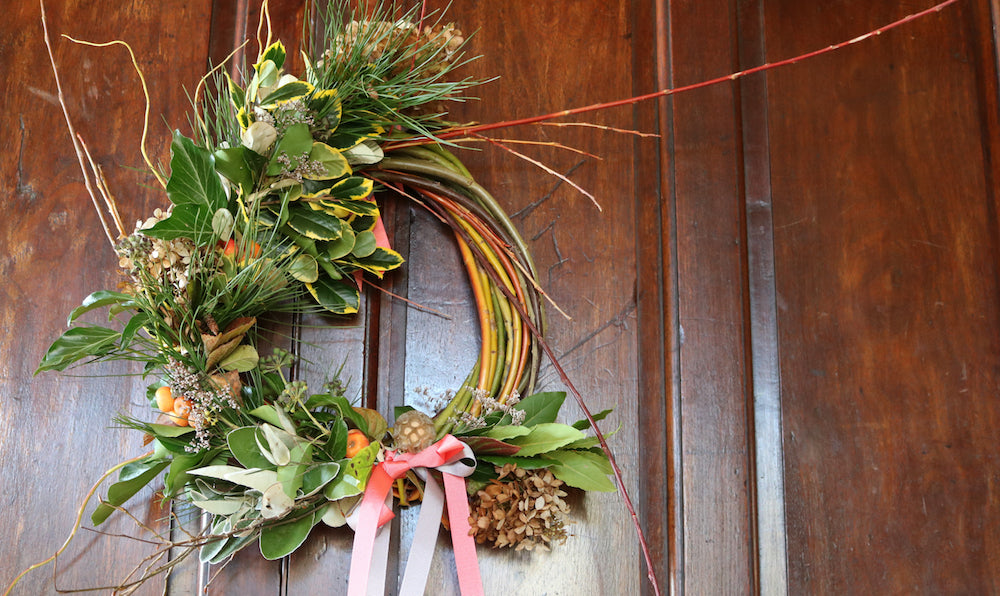Fresh willow Christmas wreaths

Today I made my first Somerset willow Christmas wreath to send someone for the purposes of a little light publicity. I'd forgotten how very calming the wreath making process is.
- First cut your willow - ours comes from the band of willow we planted round two whole sides of Common Farm. Willow recolonised the British Isles at the recession of the last ice age, and it supports almost as much wildlife as oak. Here, during the winter, the pollard crowns of the willow are stuffed with clumps of fat, black aphids which the song birds feast on through the cold months. We're careful, when cutting the willow, not to cut into these clumps of high-protein aphids, and make sure to leave them for the birds. We cut to order so that the willow for the wreaths is fresh and easily malleable for our wreathing. We use about nine nine foot lengths of willow per wreath, and about three four toot lengths for binding. Come on a Christmas wreath workshop here and we'll show you the willow woods, and you might see those naughty goldfinches darting about eating the aphids while you're here.
- Then find somewhere to sit, and work your willow a little before twisting it into a circle. Come on a Christmas wreath workshop here and we'll show you how in our gorgeous barn studio where the fire will be roaring, the mince pies tempting, the mulled wine scenting the air, and heaps of folliage will be ready for you to make a garland with after you've made your wreath.
- Then forage your garlanding. In our continueing effort to be greener in our floristry, this year our garlanding is done with raffia instead of wire. This means the whole of the garland we attach to the wreath is compostable. We use all sorts of hedgerow goodies for our garlanding, from fading hydrangea heads, through old man's beard, to bay (traditionally bay was planted outside front doors to keep the witches out - it's good, surely, therefore, in a wreath to hang on the door too,) holly, scented Monterey pine (we planted a good few of these when we came here fourteen years ago and they're great for cutting now.) Today's wreath has honesty seedheads, hydrangea, holly, scabious seed heads, dried sea lavender, Monterey pine, contorted willow stems, twiggery pokery from the hornbeam, ivy berries, crab apples... You can trawl your garden for goodies, or come on a workshop here and we can trawl our garden for you (or order a wreath from us on line and we'll send you one we've made for you.)
- We weave a garland with the stems and the raffia until it's about half, to two thirds the length of the willow circle we've made, and then we sew the raffia through the circle to attach the garland. We finish with ribbon, et voila! On Sharon's list tomorrow is to order velvet ribbon for this year's Christmas wreaths.
After Christmas you can dispose of the garland in the compost heap, and keep the willow circle hanging as a promise of spring magic as the willow circle is not a Christmas decoration, it is the garlanding only which must go by January 6th. The circle is then beautiful if hung on a wall outside where its colours will fade slowly over the years, and you can use it again and again whenever you fancy making a wreath throughout the year.
So do come on a workshop here in December to learn how to make your own, or order yours via our website for delivery UK-wide. We have an evening workshop this year too, which might be good for those of you local people who don't have time to do a full day. See the website for more details.
And thank you! And see you soon! My tummy's rumbling already at the thought of those mince pies!








